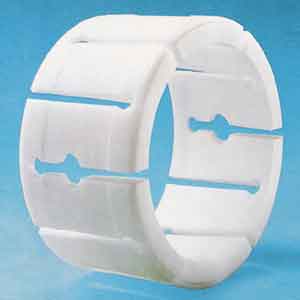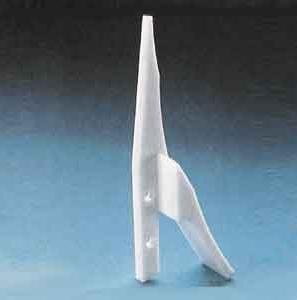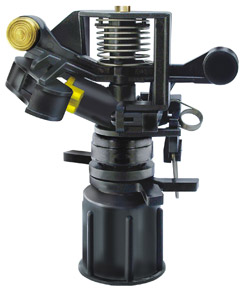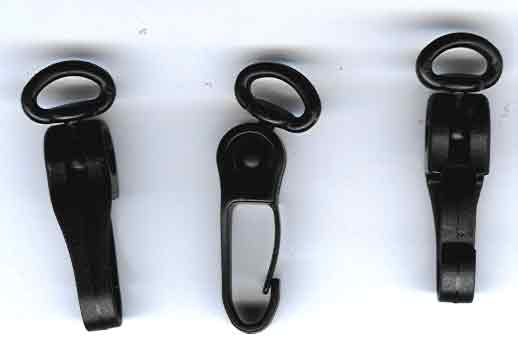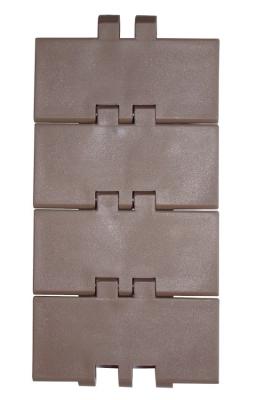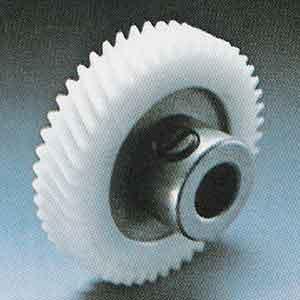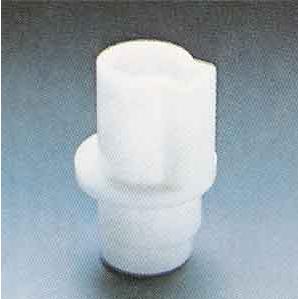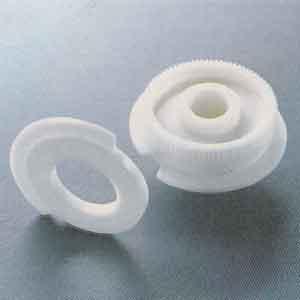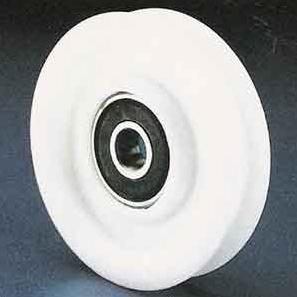POLIOXYMETHYLENE / ACETAL / POLYACETAL (POM)
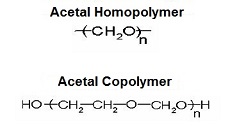 Chemical structure of POM
Chemical structure of POM
Polyacetal is a thermoplastic polymerized from formaldehyde, a gas with a boiling point of -6°F (-21°C) used in the production of acetalics, phenolics resins and aminoplasts. Polyacetal homopolymer and copolymer (ethylene oxide has as comonomer) are available in the market. There are some differences between the properties of homopolymer and copolymer directing them to specific applications.
Based on the table above, we notice that the polyacetal copolymer has advantages in applications in the chemical industry or automotive parts that come into contact with oil or gasoline, as well as parts that require support efforts for a long period of time at higher temperatures. The homopolymer is most useful when the part works dried, at room temperature and require high mechanical strength.
|
COMPARISON BETWEEN THE POM
HOMOPOLYMER AND COPOLYMER |
| Homopolymer |
Copolymer |
| More rigid |
Better chemical resistance |
| More tensile |
Greater creep resistance (load) in
long term |
| More impact resistant |
Greater thermal stability |
| More abrasion resistant |
|
Despite the relatively low melting point of the polyacetal (338°F / 170°C) its heat distortion temperature is higher than many other polymers. The maximum operating temperature for the POM homopolymer is 185°F (85°C), while that for the copolymer that temperature rises to 221°F (105°C) until reaching 275°F (135°C) if use is intermittent.
Polyacetal usually marketed with antioxidant, anti-UV additive and internal lubricants such as molybdenum disulfide, graphite and PTFE powder, which produces resins with extremely low friction coefficient (0.02) and high abrasion resistance. Incorporation of thermoplastic polyurethane (TPU) can help to improve the flexibility and impact resistance of POM, while the incorporation of glass fibers provides increased hardness and creep resistance (less common practice in acetal).
Can be injection molded, with high melt index and rare problems or difficulties in the process and the final product, even using recycled material. Can be processed by extrusion, producing billets for subsequent machining.
Features:
- Very low water absorption
- Good dimensional stability
- Abrasion resistance
- Resistance to fatigue
- High creep
- Stiffness
- Maintain its impact resistance up to -22°F (-30°C)
- Easily machinable, providing great finish
Applications:
Gears, bushings, couplings, bearings, flanges, fittings, valve components, pulleys, shafts etc.
Bibliography:
HARPER, Charles A.; PETRIE, Edward M. Plastics Materials and Process: A Concise Encyclopedia. Hoboken: John Wiley & Sons, Inc., 2003.
WIEBECK, Hélio; HARADA, Júlio. Plásticos de Engenharia: Tecnologia e Aplicações. São Paulo: Artliber Editora, 2005.
© 2010-2025 - Tudo sobre Plásticos.
All rights reserved.
Home
-
Privacy policy
-
Contact



